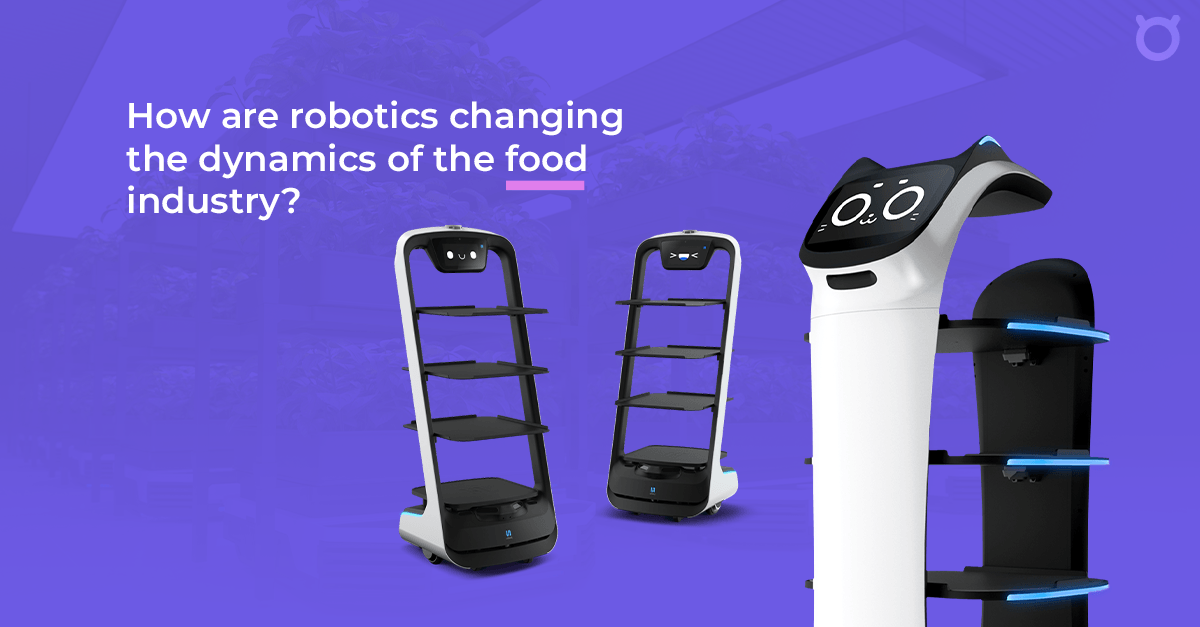The food industry is comprised of several complex steps that robots are being leveraged to optimize. Agricultural stages, restaurants, home cooking, and grocery stores are only a few places where food robots are now used to assist in cultivating and producing food. Robots make every step safer and more productive, allowing the food sector to match its supply and demand.
By 2028, the global food robotics market is projected to grow to $3,795.4 million. According to Vantage Market Research, the market generated revenues of USD 1,842.5 million in 2021 and is expected to grow at a compound annual growth rate (CAGR) of 12.80 percent.
In celebration of World Food Safety month, let us look at how robotics is changing the dynamics of the food industry.
Key drivers of robotics in the industry
Increasing demand for packaged foods
The emergence of the processed food market has been driven by the impact of busy schedules in emerging economies. Thus, packed food types are in high demand along with convenience products, driving the market of restaurant robots for sale.
Maintaining food safety is a priority
A US survey revealed that more than 48 million people in America suffer from some sort of foodborne disease per year. Robots are incredibly useful in helping firms maintain a top priority for the quality and safety of food products. Robots help human workers do their tasks better and significantly enhance efforts to minimize cross-contamination on the production line.
Surging population around the globe
The upsurge in the worldwide population led to increased demand, putting more pressure on the human staff and driving the market for robotics in food industry. Robots can work alongside their human counterparts to expand the sector’s manufacturing capacity and bridge the gap between demand and supply.
Top 6 use-cases of robots in the food industry
Robotics in food manufacturing
Robotics in food processing starts with manufacturing. This process involves a number of steps, such as packing and safety monitoring, typically performed in a manufacturing facility. The different sorts of food can first be cleaned and sorted by robots. Fruits and vegetables, for example, can be conveniently arranged into other containers using robotic arms.
Additionally, some foods can be prepared by robots prior to packaging. Since different cutting instruments are needed to chop fruits and vegetables, robots can function more effectively by matching knives to the cut needed or switching between cutting devices quickly. After that, they can independently cut food for supermarkets or even cook meals.
Robots for food packaging
Food packaging robots have been incorporated into the food supply chain for some time now. However, the latest development is that bots are being used to automate the entire packaging process, i.e., from individual packaging to group packaging. Additionally, these robots can arrange the food on pallets for eventual shipping and storage. Robotic packaging solutions that are quick and effective enable workers to mitigate the gap between supply and demand.
Robots that can navigate a warehouse and easily retrieve or store inventory may soon be an even more regular sight.
Robots working in restaurants/serving robots
The rise of contactless delivery during the pandemic era has paved the way for the emergence of delivery robots. The International Federation of Robotics (IFR) report suggests that the demand for delivery robots grew by 11% after the global pandemic. The autonomous delivery robots market will potentially reach USD 3.82 million by 2026.
However, the food delivery sector is still expanding. BellaBot is a cat-like serving robot that has become quite popular among customers for its unique appearance. BellaBot’s repertoire is filled with countless unique expressions that increase its emotional range and provide the appearance of a “Cat,” ensuring that everyone has a memorable experience. Another choice for robotic food delivery is drones. They may deliver food from restaurants to patrons gathered in one place. Although businesses are still figuring out the practicalities, this adoption would significantly impact food delivery.
Watch the collection of PROVEN Robotics Delivery Robotshere.
Robots in cookery
Robots in the food sector can accomplish cooking. Robots are already being used in restaurants to prepare and cook food. Burgers are assembled entirely by robots at Creator, a restaurant in San Francisco, where they grind the meat, grill the patties, and serve the toppings.
Robotics might soon start to appear in home cooking as well. Some reputable robot manufacturers are already working on bots that can be integrated into personal use.
Sanitation robot
Sanitation robots in restaurants are booming after the pandemic. As a result of the Coronavirus and associated social distancing rules, restaurants have become more aware of safety and hygiene, another area in which robots could be helpful.
Robotics in the agricultural landscape
It is anticipated that the precision agriculture (an approach to farm management) market will be valued at $7.87 billion by 2022. A critical component of this is robotics. By the same year, the demand for agricultural drones alone will reach $3.9 billion.
Robotics applications in the industry include seeding, sorting, and identifying. Additionally, there are self-driving tractors, harvesting robots, and weeding robots. Crop monitoring and analysis are being done using drones and self-driving ground vehicles.
Conclusion
The six segments of the food industry demonstrate how robots can change everything. Robotics is essential to elevate the sector to the next level by improving efficiency, safety, and customer satisfaction. The use of robots will become more and more integral to each step from here on out.
Drop us a line
Error: Contact form not found.




